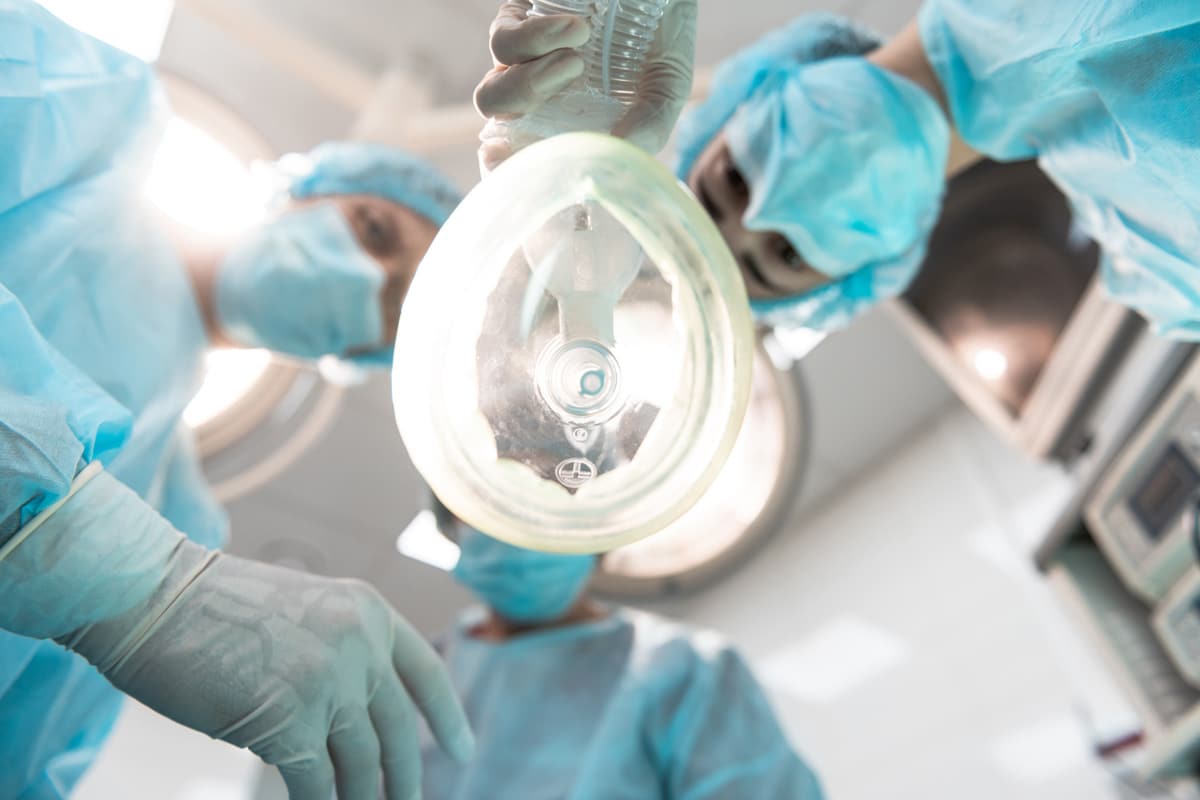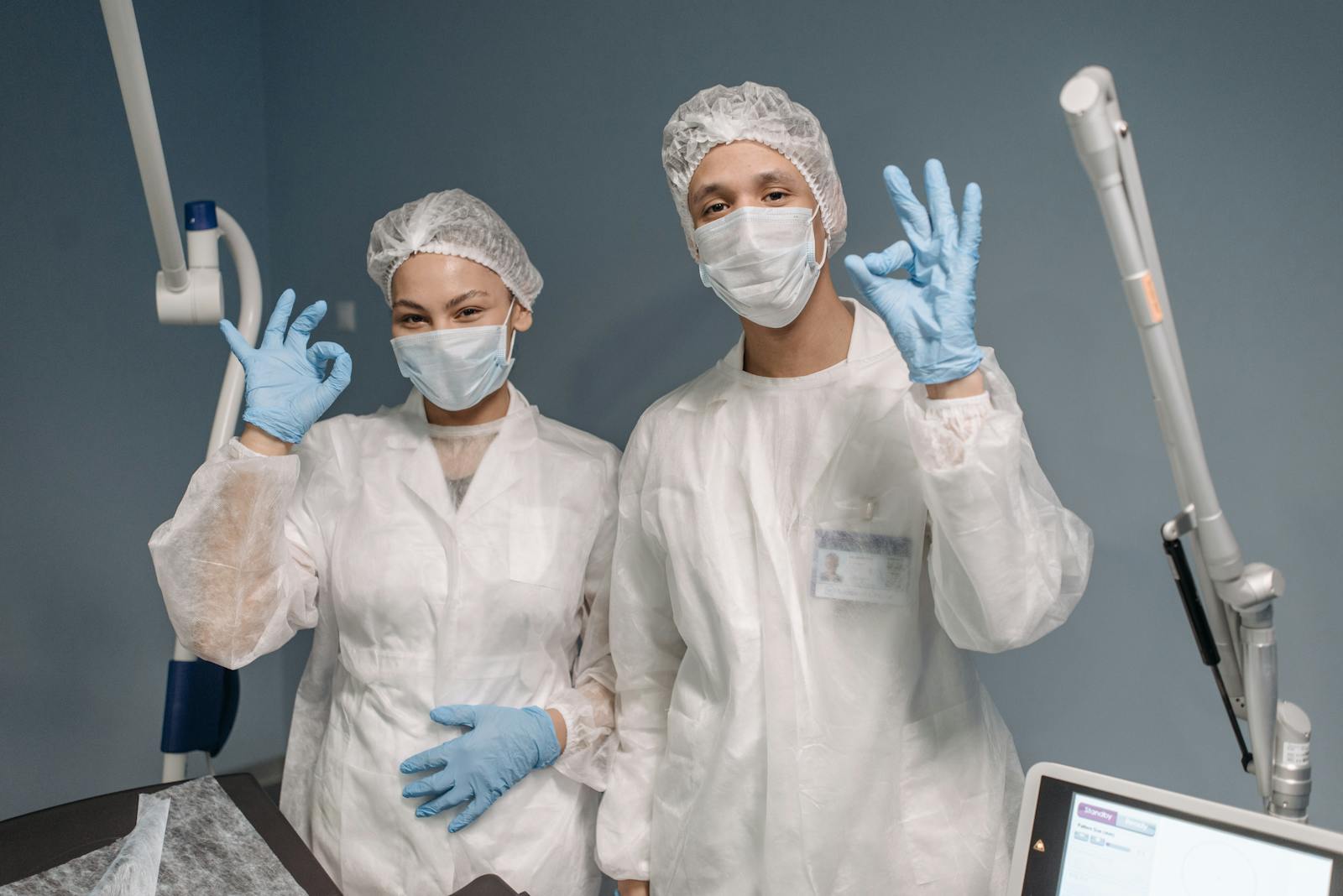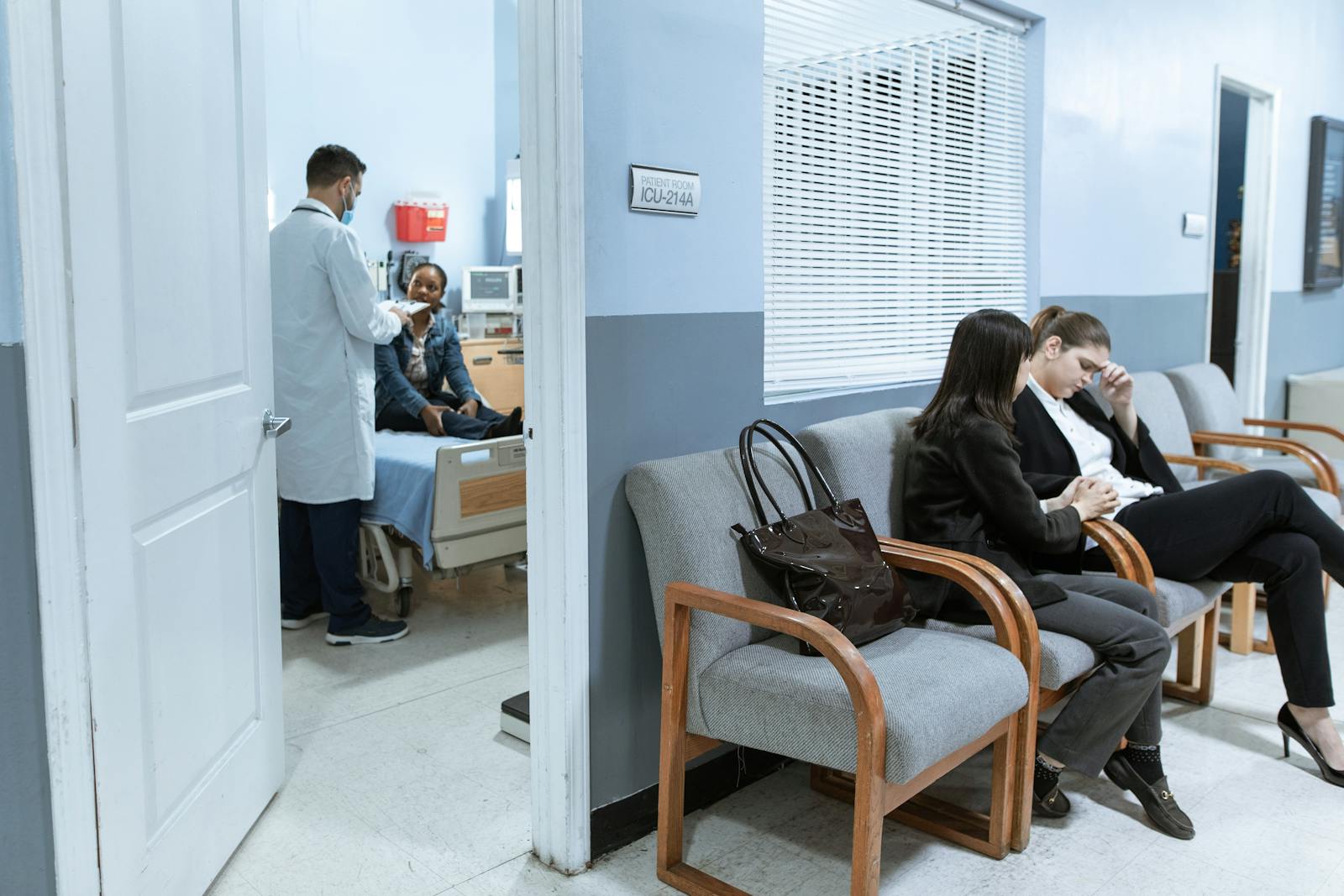Coccygectomy, the surgical removal of the coccyx, demonstrates promising success rates, with a significant number of patients reporting considerable post-operative pain relief. This procedure represents a final option for treating persistent coccydynia when non-surgical methods prove ineffective. The success of the operation depends on various parameters, including overall patient health, the severity of the condition, and the thoroughness of post-operative care. While the majority of patients express improved quality of life following surgery, potential complications present inherent risks. For a thorough understanding of coccygectomy and its associated factors, continue to explore detailed information.
Understanding Coccygectomy
Coccygectomy, a surgical procedure frequently performed to alleviate persistent coccydynia, involves the removal of the coccyx, also known as the tailbone, after non-surgical treatments have failed to provide relief. This surgical intervention, with a notable history dating back to the 19th century, has evolved greatly over the years to improve patient outcomes and reduce postoperative complications.
The coccygectomy history shows that the procedure has been refined over time in terms of surgical techniques and patient selection. The earliest documented coccygectomy was performed in 1861 by James Syme, a Scottish surgeon, who removed the coccyx to relieve pain. Today, advancements in diagnostic tools and surgical instruments have improved the precision and safety of this procedure.
However, coccygectomy is often considered a last-resort treatment due to its invasive nature and the potential for complications. Hence, surgical alternatives are explored before resorting to coccygectomy. These alternatives include conservative treatments such as physical therapy, pain management with medications, and less invasive procedures like nerve blocks or injections. Only when these treatments fail to provide relief, is coccygectomy considered, making it an important part of the treatment algorithm for persistent coccydynia.
Causes of Tailbone Pain
To properly comprehend the success rates of coccygectomy, understanding the causes of tailbone pain becomes essential. This discussion is multifaceted, encompassing common tailbone pain triggers, possible injuries and complications, as well as the impact of lifestyle on the tailbone. Each of these aspects contributes immensely to the overall perception and management of tailbone pain.
Common Tailbone Pain Triggers
Often, tailbone pain, medically known as coccydynia, arises from various triggers such as prolonged sitting, direct trauma, childbirth, or certain medical conditions. Prolonged sitting, particularly on hard surfaces, exerts pressure on the coccyx, leading to discomfort or excruciating pain. Ergonomic seating solutions, such as coccyx cushions, can provide relief, distributing weight evenly and preventing pressure buildup on the tailbone. Direct trauma, like a fall, may bruise, dislocate, or fracture the coccyx, causing severe pain. Childbirth is another significant trigger, as the coccyx needs to flex out of the way during delivery, which can result in injury. Certain medical conditions, such as pilonidal cysts or cancer, can also cause coccydynia. Pain management techniques, including medication, physiotherapy, and in severe cases, coccygectomy, are employed to alleviate the suffering.
Tailbone Injuries and Complications
In evaluating the causes of tailbone pain, it is imperative to contemplate the range of possible injuries and complications that can affect the coccyx.
- Trauma: This is the most common cause of coccyx pain. Falls, childbirth, or other forms of direct impact to the tailbone can result in fractures or dislocations.
- Degenerative changes: Aging can lead to changes in the coccyx such as arthritis.
- Infection: In rare cases, an infection in the tailbone area can lead to coccydynia.
- Tumors: Both malignant and benign tumors can lead to tailbone pain.
Diagnosing tailbone injuries involves a thorough physical examination, patient history, and in some cases, imaging studies. Tailbone injury prevention strategies include using proper equipment during high-risk activities and maintaining overall bone health.
Lifestyle Impact on Tailbone
Surprisingly, lifestyle factors can greatly contribute to tailbone pain, with sedentary behavior and insufficient physical activity often leading to undue stress on the coccyx. Prolonged sitting and incorrect posture can exacerbate coccyx discomfort, further emphasizing the need for regular movement and exercise benefits. A sedentary lifestyle can increase the risk of coccyx inflammation or coccydynia, damaging the surrounding ligaments and muscles. Regular exercise not only strengthens these muscles, reducing the risk of injury, but also improves blood flow to the area, promoting healing and reducing inflammation. Moreover, the mental health impact of chronic pain can be significant, leading to depression and anxiety. Hence, incorporating physical activity into one’s daily routine can improve both physical and mental wellbeing, thereby reducing the risk of coccyx pain.
Alternatives to Coccygectomy
While coccygectomy may be a viable solution for some, there are numerous alternatives to this surgical procedure that should be considered, each with their own unique benefits and potential drawbacks. These alternatives mainly include non-surgical treatments and the use of coccyx cushions.
Non-surgical treatments aim to alleviate pain and discomfort without the need for invasive procedures. These methods are often the first line of defense before resorting to surgery. They include:
* Pain medication: Over-the-counter or prescription drugs can be used to manage pain.
* Physical therapy: Tailored exercises can strengthen the muscles supporting the coccyx, providing relief.
* Injections: Corticosteroids or local anesthetics can be injected to reduce inflammation and pain.
* Coccyx cushions: These specially designed cushions can reduce pressure on the tailbone, providing comfort during prolonged periods of sitting.
Each of these alternatives carries its own potential benefits and drawbacks. For example, while pain medication can provide quick relief, it may not address the underlying issue. Similarly, coccyx cushions can make sitting more comfortable, but they do not cure the condition. Hence, a holistic approach considering multiple alternatives may be the best course of action for many patients.
Pre-Surgery Preparation
In the context of coccygectomy, pre-surgery preparation, including a specific pre-operative diet plan and a thorough physical examination, plays a significant role in the overall success rate of the procedure. The pre-operative diet plan is important as it aids in reducing surgical complications by ensuring ideal nutritional status of the patient. Concurrently, the physical examination provides essential information about the patient’s health status, helping to predict and mitigate potential surgical risks.
Pre-Operative Diet Plan
An essential pre-operative diet plan is a crucial component of the preparation process for a Coccygectomy, designed to optimize the patient’s health and enhance recovery outcomes. Adherence to dietary restrictions and the incorporation of nutritional supplements are key elements of this plan.
The specifics can vary between patients, but a common approach might include:
- Reducing intake of processed foods and sugars to minimize inflammation.
- Increasing protein consumption to aid tissue repair and healing.
- Incorporating nutritional supplements, such as vitamins A and C, to bolster the immune system.
- Ensuring adequate hydration, which is critical for all bodily functions including recovery.
In essence, a well-balanced, nutrient-rich diet can set the stage for a successful recovery post-Coccygectomy.
Necessity of Physical Examination
Before undergoing a Coccygectomy, a thorough physical examination serves as an essential step in pre-surgery preparation, offering detailed insights into the patient’s overall health status and potential risk factors. This includes detailed examination techniques to assess the patient’s cardiovascular, respiratory, and metabolic systems, among others.
The examination process provides a platform for risk identification and management. It can uncover hidden complications such as coagulation disorders, infections, or uncontrolled diabetes, which could greatly impact surgery outcomes if undetected. Additionally, the patient’s general physical condition, including factors like weight and age, are also considered as they can influence both the surgery and recovery process. Therefore, a meticulous physical examination is pivotal in optimizing the success rate of Coccygectomy.

Coccygectomy Procedure Details
Performing a coccygectomy, a surgical procedure that involves the removal of the coccyx or tailbone, demands meticulous attention to detail and a profound understanding of the intricate anatomy of the lower spine. The surgical team must possess crucial expertise for this delicate procedure, using specific surgical tools and selecting appropriate anesthesia options for each patient.
The coccygectomy procedure can be divided into several critical stages:
- Preparation: The patient is positioned in a prone or jackknife position, and the area around the coccyx is sterilized. Anesthesia is administered, either general or spinal, depending on the patient’s overall health and surgeon’s preference.
- Incision and Exposure: A small incision is made over the coccyx, and the surgical tools are used to expose the bone and surrounding tissue.
- Removal: The coccyx is carefully detached from the surrounding tissues and removed. Special attention is given to avoid damage to the rectum and surrounding nerves.
- Closure: After ensuring no active bleeding, the incision is closed using sutures or staples.
The coccygectomy procedure, while straightforward, requires precision and a thorough understanding of the region’s anatomical complexities. The surgeon’s skills, the surgical tools used, and the anesthesia options chosen all play crucial roles in the success of the operation.
Post-Surgery Recovery Process
After a coccygectomy, the post-surgery recovery process is a crucial factor in determining the overall success of the procedure. Key elements of this process include the duration of recovery time, strategies for managing post-operative pain, and the role of physical therapy in returning to normal function. Each of these components will be examined in detail to provide a thorough understanding of the post-surgery recovery process.
Understanding Recovery Time
The post-operative phase after a coccygectomy presents a critical window in which attentive management of recovery protocols is essential to guarantee successful healing and patient comfort. Even though surgical alternatives and pain management techniques play a pivotal role in the process, the time it takes to recover from a coccygectomy can vary considerably depending on several factors.
- Individual patient health status
- The skill and experience of the surgeon
- Adherence to post-operative care instructions
- The presence of any complications following the surgery
Thoroughly understanding the recovery period is crucial in managing patient expectations and ensuring a smooth return to everyday activities. The ultimate goal is to enhance the healing process and improve the overall success rate of the coccygectomy procedure.
Managing Post-Surgery Pain
Effective management of post-surgery pain, a paramount aspect of the post-operative recovery process, necessitates a thorough understanding of various factors, including the patient’s individual pain threshold, the use of suitable analgesics, and implementation of non-pharmaceutical interventions. Pain medication options are to be personalized according to individual tolerance and the severity of pain. They may range from over-the-counter NSAIDs to stronger opioids, used judiciously to avoid potential dependence. Non-pharmaceutical interventions can include techniques like cognitive behavioral therapy, which address emotional recovery aspects, aiding in the holistic healing of the patient. These methods help patients cope with the stress, anxiety, and depression often associated with post-surgical experiences, improving overall outcomes and enhancing success rates of coccygectomies.
Physical Therapy Importance
In addition to pain management strategies, another significant component of the post-surgery recovery process is the implementation of physical therapy, which is designed to facilitate mobility, enhance function, and expedite the restoration of normal activities. Here, physical therapy benefits are manifold and profoundly impact the patient’s recovery trajectory after coccygectomy.
- Tailored therapy programs guarantee an individualized approach, taking into account the patient’s unique needs and recovery goals.
- Physical therapy aids in improving strength and flexibility, vital for preventing post-surgery complications.
- It fosters a quicker return to daily routines, promoting overall well-being and better quality of life.
- Regular therapy sessions can also reduce the risk of chronic pain development, enhancing long-term post-surgical outcomes.
Therefore, physical therapy’s importance cannot be understated in the context of post-surgery recovery.
Analyzing Coccygectomy Success Rates
To thoroughly assess the success rates of coccygectomy, we must explore various studies and medical records that document patient outcomes post-surgery. A systematic review of these sources provides a more in-depth understanding, which can be further detailed by factoring in the cost of surgery and insurance coverage.
Analyzing the data reveals that the cost of coccygectomy varies greatly based on factors such as geographical location, the surgeon’s experience, and the complexity of the patient’s condition. Despite this variation, the majority of patients report substantial relief from chronic pain post-surgery, indicating a high success rate for the procedure.
Insurance coverage also plays a crucial role in the accessibility and eventual success of the procedure. Extensive policies typically cover a significant portion of the surgery cost, making it a viable option for a broader range of patients. Additionally, the financial security provided by insurance can positively impact post-operative recovery by reducing stress related to medical expenses.
Factors Affecting Success Rates
Exploring through the myriad factors that influence coccygectomy success rates, one must consider aspects such as the patient’s overall health, the surgeon’s expertise, post-operative care, and the severity of the condition being treated.
- Patient’s overall health: The patient’s general health can directly influence the success rate of the surgery. A healthy body can withstand the surgery and recover more effectively.
- Surgeon’s expertise: Proficient surgical techniques and vast experience can increase the chances of a successful coccygectomy. It is essential to take into account the surgeon’s qualifications and success record.
- Post-operative care: Proper post-operative care is crucial for successful recovery. This includes timely medication, adequate rest, and appropriate physical therapy.
- Severity of the condition: The severity of the condition can impact the complexity of the surgery, which in turn influences the success rate. More complex cases might present greater technical challenges.
Moreover, the psychological impact of the surgery on the patient can also affect the success rate. Patients who are mentally prepared for the surgery and understand the recovery process generally have better outcomes. It is important to guarantee the patient’s mental well-being before and after the procedure for the most favorable results.
Potential Risks and Complications
Despite the generally high success rate of coccygectomy, potential risks and complications must be carefully considered, encompassing both surgical and post-operative aspects such as infection, nerve damage, and extended recovery time.
The surgical risks can be categorized into immediate and long term. Immediate risks include hemorrhage and anesthesia complications, such as allergic reactions or problems with respiration. Long term risks primarily involve wound infection, which can escalate into a systemic infection if not promptly addressed.
Nerve damage represents a significant potential complication, as the coccyx is in close proximity to the sciatic nerve. Any inadvertent damage to this nerve during surgery can lead to lasting consequences such as chronic pain or numbness.
Extended recovery time is another potential issue, especially for patients with pre-existing conditions such as diabetes or obesity. These conditions can interfere with wound healing and increase the risk of post-operative complications.
In addition, some patients may experience a persistent pain known as coccydynia even after surgery, though this is quite rare. As with any surgical procedure, it is important for the patient and the surgeon to thoroughly discuss all potential risks and complications before proceeding with a coccygectomy.
Patient Testimonials and Experiences
Having examined the potential risks and complications associated with coccygectomy, it is informative to ponder the personal accounts and experiences of patients who have undergone this procedure. These testimonials often provide crucial insights into the emotional healing post-surgery, and the psychological impact of coccygectomy, two dimensions that are less frequently discussed in the medical literature.
From the data we gathered, several common themes emerged from the narratives of patients:
- Many reported an immediate relief of chronic pain, which improved their quality of life to a great extent.
- Emotional healing post-surgery was frequently mentioned, with patients expressing a sense of liberation once the source of their discomfort was removed.
- The psychological impact of coccygectomy varied among individuals. Some patients experienced anxiety or fear of re-injury, while others found newfound confidence after the procedure.
- The importance of a supportive network, including family, friends, and medical professionals, was emphasized in facilitating both physical recovery and emotional healing.
Long-Term Prognosis After Coccygectomy
In evaluating the long-term prognosis after a coccygectomy, it is essential to take into account several key factors including the patient’s overall health, the success of the surgery, and the effectiveness of the post-operative care and rehabilitation. These prognosis variables play a significant role in determining the patient’s quality of life post-surgery.
A thorough review of clinical studies reveals that a majority of patients report significant pain relief and improved functionality several years following the procedure. However, some patients may require surgical revisions, often due to complications such as wound infection or the development of a pilonidal cyst. The patient’s age, comorbidities, and adherence to post-operative instructions may also affect the long-term outcomes.
The success rate of a coccygectomy is generally high, and most patients can expect a good long-term prognosis. Nevertheless, patient education about the potential need for surgical revisions and the importance of rigorous post-operative care is critical.
Frequently Asked Questions
What Types of Anesthesia Are Typically Used During Coccygectomy?
General or spinal anesthesia are typically utilized during a coccygectomy. Selection is based upon patient health and potential anesthesia reactions. Post surgery pain management often involves opioids, nonsteroidal anti-inflammatory drugs, or nerve blocks.
How Does Coccygectomy Affect Daily Activities Like Sitting or Driving?
The coccygectomy recovery process can temporarily affect daily activities such as sitting or driving due to post-surgical discomfort. However, with appropriate postoperative care, mobility is typically restored, minimizing coccygectomy’s impact on these activities in the long term.
Are There Any Specific Exercises or Physical Therapy Recommended After Coccygectomy?
After coccygectomy, specific exercises and physical therapy are indeed recommended to enhance post-surgery mobility and adhere to the recovery timeline. These often include gentle stretching and strengthening exercises to improve comfort and functionality.
How Does Coccygectomy Affect Pregnancy and Childbirth?
Coccygectomy can improve pregnancy comfort by easing tailbone pain. However, its impact on labor is not firmly established, with research indicating both unchanged childbirth and possible complications. It’s important to consult with a healthcare professional.
Is Coccygectomy Covered by Most Insurance Plans?
Coccygectomy coverage depends on individual insurance plans. Many consider it a necessary procedure, meeting insurance criteria for coverage. However, out of pocket costs can vary, so it’s important to verify with your provider first.


